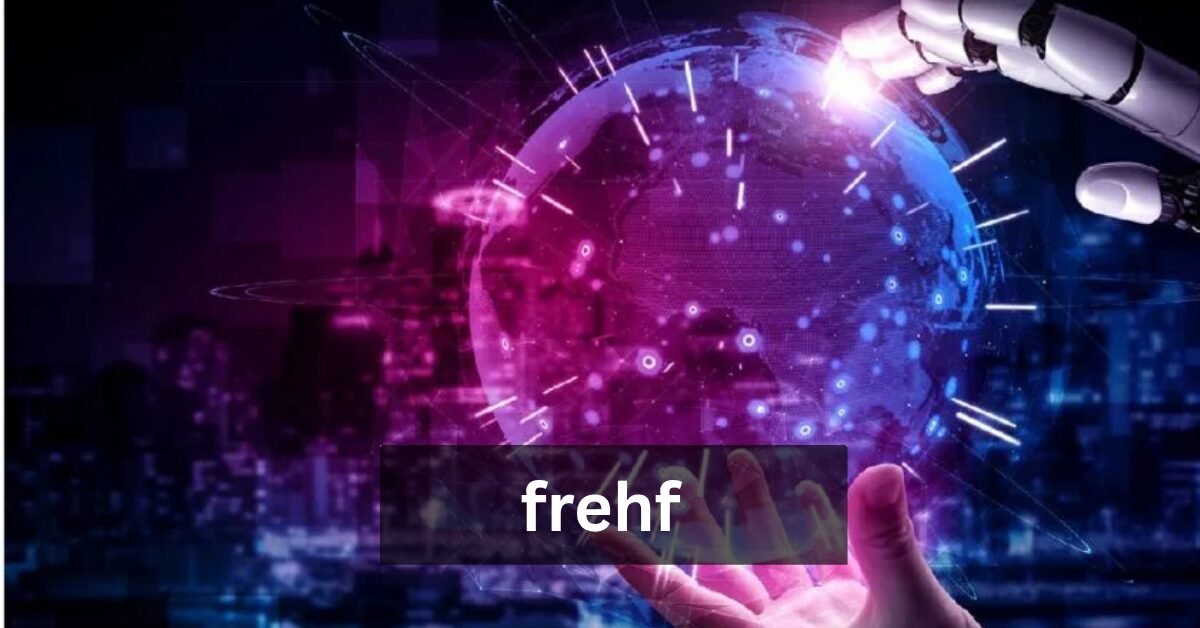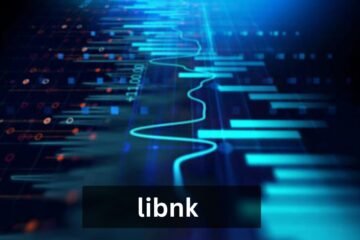In today’s rapidly evolving digital landscape, organizations and individuals need technologies that are adaptive, intelligent, and seamlessly integrated. Enter Frehf, a groundbreaking framework designed to redefine how we approach digital ecosystems. By merging advanced technologies with user-centric design, Frehf promises a future where systems are not only intelligent but also highly responsive and engaging.
This article dives deep into the concept of Frehf, exploring its principles, applications, and transformative potential. It’s an authoritative guide for anyone looking to understand how the Future-Ready, Responsive, Engaging, Hyper-Connected Framework is shaping the digital age.
Frehf is a cutting-edge framework that unites AI, IoT, edge computing, and cloud tech into seamless, adaptive digital systems. Its primary goal is to create ecosystems that respond intelligently to user behavior, environmental inputs, and operational demands.
At its core, Frehf is built on four pillars—future-ready, responsive, engaging, and hyper-connected—ensuring that technology solutions are not only advanced but also relevant, secure, and immersive. This concept is particularly impactful in sectors such as smart cities, healthcare, education, retail, and enterprise solutions, where adaptability and real-time decision-making are crucial.
Why Frehf Matters in the Digital Age
The digital world is evolving at unprecedented speed. Organizations face the dual challenge of adopting cutting-edge technologies while ensuring they remain relevant and user-friendly. Frehf addresses this need by providing a future-ready framework capable of handling complex data, delivering immersive user experiences, and ensuring robust cybersecurity.
Moreover, the framework fosters human-tech collaboration, allowing users and machines to work synergistically. By embracing Frehf, businesses can streamline operations, improve decision-making, and maintain a competitive edge in an increasingly hyper-connected environment.
Overview of Future-Ready, Responsive, Engaging, Hyper-Connected Framework
Frehf’s structure is built on four key principles:
- Future-Ready: Preparing systems for rapid technological evolution.
- Responsive: Creating adaptive systems that react dynamically to changing conditions.
- Engaging: Enhancing the user experience through intuitive, interactive interfaces.
- Hyper-Connected: Ensuring seamless connectivity across devices, networks, and platforms.
By combining these principles, Frehf provides a roadmap for building technology solutions that are not only advanced but also resilient, secure, and user-focused.
The Core Principles of Frehf
Future-Ready: Preparing for Tomorrow’s Technology
Being future-ready means anticipating technological shifts before they happen. Frehf emphasizes the integration of AI, blockchain technology, and digital twins to ensure that systems can evolve without requiring complete overhauls. For example, smart cities that use Frehf principles can adapt to population growth, environmental changes, and traffic dynamics in real-time.
This principle encourages organizations to adopt adaptive technology solutions, such as cloud computing and edge computing, which enable scalable and flexible operations. Businesses leveraging Frehf can stay ahead of competitors by being prepared for innovations rather than reacting to them.
Responsive: Adaptive Systems for Dynamic User Needs
Responsiveness is about creating systems that adjust to changing circumstances automatically. Frehf-powered platforms use AI integration and IoT connectivity to monitor user interactions and environmental conditions, ensuring optimal performance. For instance, healthcare systems can adapt patient care plans in real-time, while retail platforms can personalize shopping experiences based on customer behavior.
By implementing responsive systems, organizations can increase operational efficiency, reduce downtime, and deliver personalized experiences, which significantly improves user satisfaction and engagement.
Engaging: Enhancing User Experience and Interaction
Frehf centers on engagement with systems built to be immersive and intuitive, using AR, VR, and interactive dashboards for modern users. This approach allows users to interact naturally with technology, creating experiences that are memorable, productive, and enjoyable.
Engaging designs are crucial in education and training platforms, where immersive experiences help learners understand complex concepts faster. Similarly, in enterprise applications, interactive interfaces facilitate better collaboration and decision-making.
Hyper-Connected: Building Interconnected Digital Ecosystems
Hyper-connectivity ensures that all components of a system are seamlessly integrated, from IoT sensors to cloud-based platforms. Frehf frameworks emphasize interoperability and real-time data exchange, enabling a truly connected digital ecosystem. For example, smart cities benefit from hyper-connected networks that monitor traffic, energy usage, and environmental conditions simultaneously.
Hyper-connectivity also enhances cybersecurity by allowing centralized monitoring and automated threat detection across interconnected systems, ensuring a robust, secure digital environment.
Frehf in the Context of Digital Transformation
Digital transformation is no longer optional—it’s a necessity. Frehf provides a structured approach to implementing transformative technologies without compromising usability or security. By incorporating human-tech collaboration, organizations can bridge the gap between innovation and practical application.
Frehf supports AI integration, IoT-enabled smart ecosystems, and edge computing solutions, which are essential for transforming traditional processes into intelligent, automated workflows. These capabilities are particularly valuable in sectors requiring real-time data-driven decision-making, such as finance, logistics, and healthcare.
The Role of AI in Frehf
Artificial Intelligence (AI) is a cornerstone of Frehf. By analyzing vast amounts of data, AI allows systems to anticipate user needs, detect anomalies, and optimize operations. For instance, predictive analytics in healthcare can forecast patient complications, while AI in retail predicts purchasing trends.
Moreover, AI facilitates adaptive technology solutions, enabling systems to evolve with user behavior and environmental conditions. This adaptability ensures that Frehf-powered platforms remain relevant and effective over time.
IoT Integration for Smart Ecosystems
The Internet of Things (IoT) plays a pivotal role in connecting devices, sensors, and platforms. Frehf leverages IoT to build smart ecosystems where information flows seamlessly across devices, enhancing operational efficiency and user experience.
For example, in smart cities, IoT-enabled traffic systems can communicate with public transport networks to optimize routing. Similarly, industrial IoT applications enable real-time monitoring of machinery, reducing downtime and maintenance costs.
Cybersecurity Considerations in Hyper-Connected Systems
As connectivity increases, so does the risk of cyber threats. Frehf integrates robust cybersecurity measures into every layer of the digital ecosystem. From blockchain technology ensuring data integrity to AI-driven threat detection, the framework prioritizes security without compromising functionality.
Organizations adopting Frehf benefit from proactive risk management, ensuring that sensitive data, critical infrastructure, and user privacy remain protected in increasingly hyper-connected environments.
Real-World Applications of Frehf
Frehf in Smart Cities and Urban Innovation
Smart cities represent one of the most promising applications of Frehf. By integrating IoT, AI, and digital twins, urban planners can optimize energy usage, traffic management, and public safety. These hyper-connected ecosystems enhance quality of life while promoting sustainability and efficiency.
Cities leveraging Frehf principles can respond dynamically to emergencies, forecast resource demand, and engage citizens through interactive platforms, creating a truly future-ready urban environment.
Healthcare: AI-Powered, Patient-Centric Solutions
In healthcare, Frehf enables AI-driven patient monitoring, predictive diagnostics, and personalized treatment plans. Hospitals and clinics can leverage real-time data from wearable devices and IoT sensors to deliver responsive care.
By integrating edge computing and cloud platforms, healthcare providers can analyze vast datasets securely, improving patient outcomes and operational efficiency. Frehf ensures that technology serves as a supportive partner, not a barrier, to patient care.
Education: Adaptive Learning Platforms
Education is transforming with immersive, adaptive technologies powered by Frehf. AR and VR applications create interactive learning environments, while AI tailors content to individual learning styles.
Institutions adopting Frehf principles can enhance engagement, retention, and skill acquisition, ensuring that students gain practical knowledge in a responsive, immersive, and future-ready educational ecosystem.
Retail & E-commerce: Personalized Experiences
Retailers are using Frehf to deliver personalized, immersive shopping experiences. AI analyzes customer behavior, IoT devices track inventory, and AR enhances online shopping with virtual try-ons.
This hyper-connected approach improves customer satisfaction, drives sales, and ensures that retail platforms remain agile in an ever-changing digital marketplace.
Enterprise Solutions: Streamlined Operations and Decision-Making
Frehf principles help enterprises integrate AI, cloud computing, and IoT to optimize workflows, enhance collaboration, and improve decision-making. Digital twins and edge computing allow businesses to simulate operations, identify inefficiencies, and implement proactive solutions.
By adopting Frehf, companies become more agile, resilient, and competitive in a fast-paced digital environment.
Benefits of Implementing Frehf
Increased Efficiency and Productivity
Frehf-powered systems optimize processes through automation, real-time monitoring, and intelligent decision-making. Businesses can reduce downtime, minimize errors, and improve overall productivity.
Enhanced User Engagement and Satisfaction
Immersive interfaces, personalized experiences, and responsive platforms ensure that users remain engaged and satisfied, whether in healthcare, education, or enterprise environments.
Future-Proofing Businesses and Technology
By adopting adaptive technologies and hyper-connected systems, organizations can anticipate changes and scale efficiently, staying ahead of competitors in a rapidly evolving market.
Data-Driven Insights and Predictive Analytics
Frehf integrates AI and IoT analytics, enabling predictive insights that inform strategic decisions, optimize resource allocation, and improve outcomes across industries.
Challenges in Adopting Frehf
Technological Barriers
Implementing Frehf requires advanced infrastructure, skilled personnel, and integration of complex technologies, which can pose challenges for organizations with limited resources.
Cost and Resource Considerations
Investment in AI, IoT, AR/VR, and cloud platforms may be substantial. Strategic planning is essential to ensure ROI and sustainable implementation.
Data Privacy and Security Challenges
Hyper-connected systems increase the risk of cyber threats. Strong cybersecurity measures, compliance with regulations, and encryption technologies are essential.
Integration with Existing Systems
Adopting Frehf often requires integrating with legacy systems. Seamless interoperability is crucial to avoid disruptions and maximize benefits.
Opportunities for Innovators and Early Adopters
Early adopters of Frehf can lead digital transformation initiatives, create competitive advantages, and explore new business models powered by AI, IoT, and adaptive technologies.
Conclusion
Frehf represents the future of intelligent, adaptive, and hyper-connected systems. By integrating AI, IoT, AR/VR, and cloud technologies, organizations can achieve efficiency, engagement, and resilience.
Businesses and innovators should embrace Frehf to stay competitive, enhance user experiences, and build future-ready ecosystems.
Frehf is not just a framework; it is a transformative approach to technology that empowers organizations, enhances lives, and fosters innovation. Its principles guide the creation of digital ecosystems that are intelligent, secure, and truly responsive to human needs.
Frequently Asked Questions
What industries benefit most from Frehf?
Frehf is impactful in healthcare, education, retail, smart cities, and enterprise solutions, enhancing efficiency and user experiences.
How does Frehf improve user experience?
By leveraging AI, AR/VR, and responsive design, Frehf creates immersive, personalized, and intuitive digital interactions.
What are the main challenges of Frehf implementation?
Challenges include technological complexity, integration with legacy systems, costs, and cybersecurity considerations.
Is Frehf suitable for small businesses?
Yes, with scalable and modular approaches, even smaller enterprises can adopt Frehf principles to enhance efficiency and digital engagement.
How does Frehf support digital transformation?
Frehf integrates AI, IoT, and cloud computing into cohesive ecosystems, enabling real-time decision-making, predictive analytics, and future-ready operations.
Stay in touch to get more updates & alerts on TabooFantazy! Thank you



